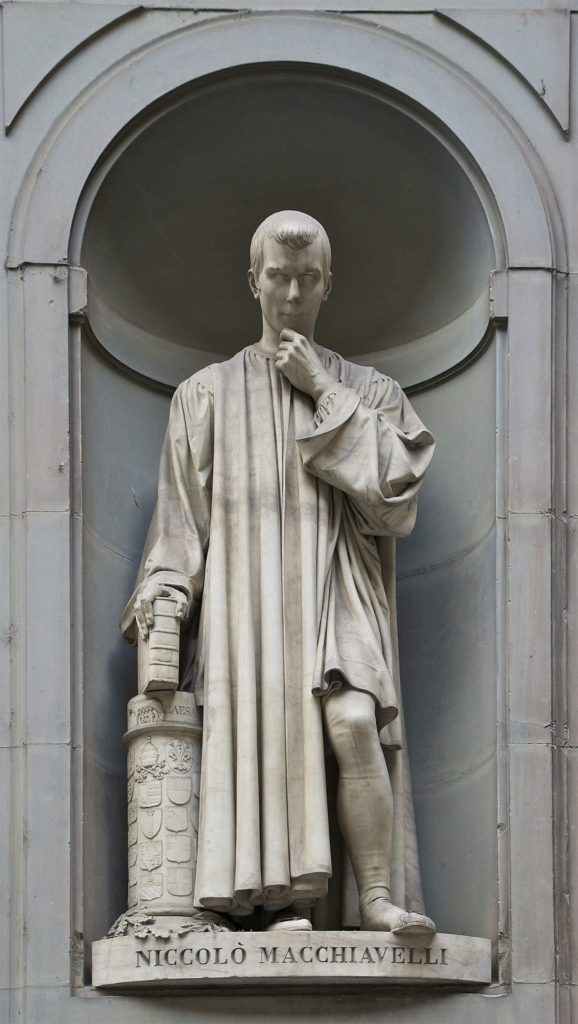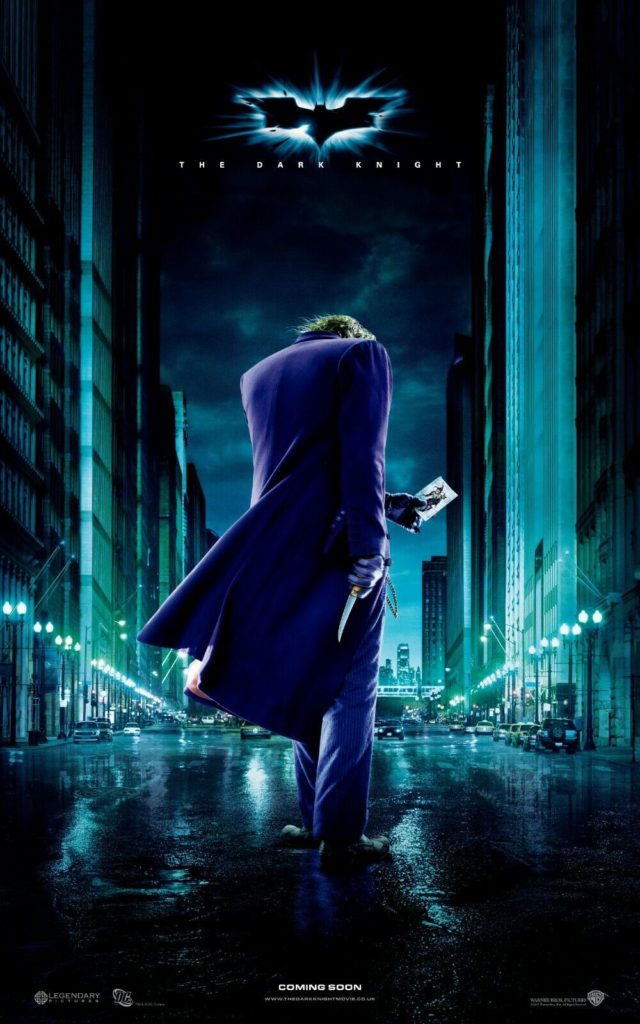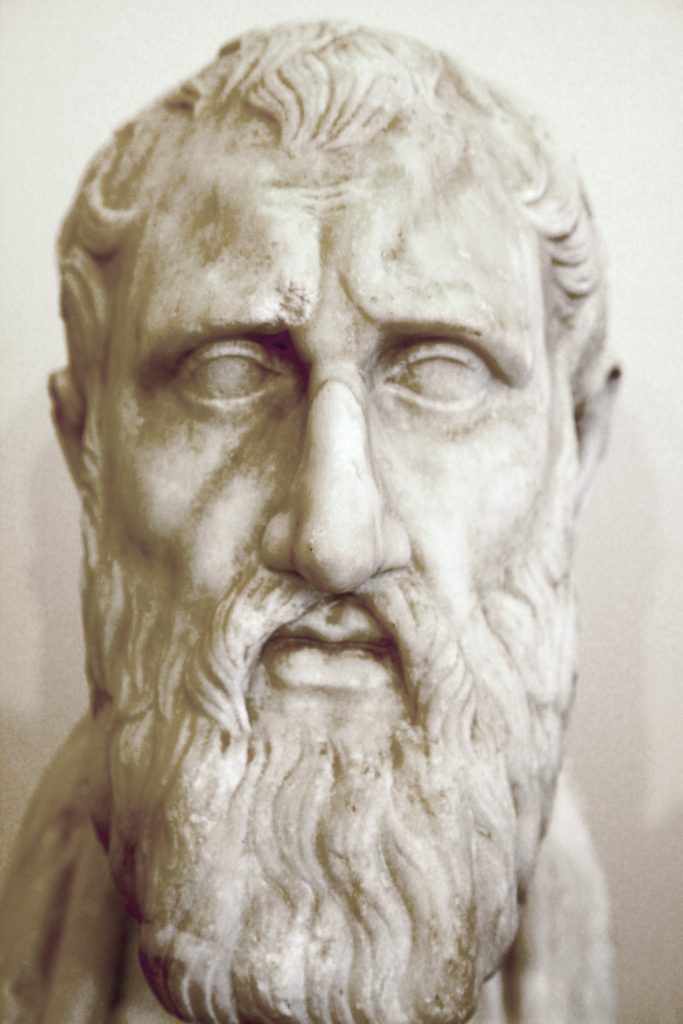by Enbion Micah Aan
語言:
English /// 中文
Photo Credit: Enbion Micah Aan
IN NICCOLO MACHIAVELLI’S The Prince, he used a metaphor to describe how a Prince should look at political situations: “For just as those who sketch landscapes place themselves down in the plain to consider the nature of mountains and high places to consider the nature of low places place themselves high atop mountains…” Much like the ideal painter Machiavelli describes, Christopher Nolan, as an artist, investigates his subject matter thoroughly in The Dark Knight and suggests its continuation in Tenet. Here I’d like to argue these two films are anchored by the movements in Western political philosophy. If read closely, these two films are linked by its political context, and one could say Tenet is a “political sequel” to The Dark Knight.
First, let us first discuss classical Greek political philosophy in relation to Nietzsche’s political philosophy. This will sketch out the political discourse in The Dark Knight. Then we can take a look at Tenet and understand how the conflict between these two discourses continued into Tenet.

Statue of Niccolo Macchiavelli. Photo credit: Lorenzo Bartolini/WikiCommons/CC
Plato advocated for a statist state in which there is a political elite he calls “Guardians”. We can turn to Plato’s Republic in Book III 375a -376c , where the quality of Guardians are discussed. Socrates started the discussion by comparing the Guardians to dogs and sketched out the qualities of the Guardians. Then in 277c, Socrates spoke of the Guardians’ education: “…we must supervise the makers of tales; and if they make a fine tale, it must be approved, but if it’s not, it must be rejected.” This passage anticipates later elaborations on the education of the Guardian class and the famous “noble lie” in Book III 414c: “….contrive one of those lies that comes into being in case of need, of which we were just now speaking, some one noble lie to persuade, in the best case, even the rulers, but if not them, the rest of the city…” In other words, Plato’s notion of a statist state that requires a Guardian Class and a Noble Lie (sometimes also known or translated as “Foundation Myth”).
Now we can turn to Nietzsche’s political philosophy. Nietzsche was not the first philosopher to go against classic Greek philosophy and the Christian Church—the aforementioned Machiavelli was. Machiavelli was not simply a political strategist as popularly understood. Machiavelli was the first modern political philosopher and made a significant contribution to our understanding of politics.
The political project Machiavelli takes on is a very significant one, as he was the first political philosopher to go against both the Scholastics and the Church—in other words, against both classic Aristotelian or Platonic Greek philosophy and Christianity. Because of this, Machiavelli is considered the first “modern” philosopher. Machiavelli’s achievement created much room for political discourse and advancement, and the project, many would argue, culminated in the Enlightenment. Nietzsche then went far beyond Machiavelli or any Enlightenment philosophers in his nihilism. In a nutshell, Liberal Democracy is inspired very much in part by the philosophy of Plato whose Guardians are represented by Batman and company, and Nietzschean nihilist seeks to subvert such a state, which is represented by the Joker.
Nietzsche’s nihilistic and pessimistic political outlook is inherently destructive. In Sheldon Wolin’s Politics and Vision, he put Nietzsche’s nihilistic political outlook in unambiguous terms: “Nietzsche envisaged a philosophical elite that would prove itself worthy by embracing the central tenet of nihilism, the meaninglessness of the world… The supreme test for philosophers is to accept, even exult in, the destruction of that, which, as lovers of truth, they had held most dear. Nihilism begins with the announcement of ‘the end of the moral interpretation of the world’ and the ‘suspicion that all interpretations of the world are false’… nihilism means ‘that the highest values devalue themselves’. The highest values become self-subverting.” In other words, nihilism, due to inherent meaninglessness of life, seeks to invalidate, subvert, and obliterate values.
Let us now finally talk about The Dark Knight and examine the conflict between Batman and Joker by looking at how these two characters are introduced by the film. Joker was introduced in a bank heist, where Joker’s team members successively killed another heist participant once that person had completed his task. Joker then took off the mask to introduce himself, in response to a banker’s repeated inquiries into his belief: “Whatever doesn’t kill you simply makes you stranger…” After the Joker scene, Batman was introduced in a scene where the first line from the gangsters was, “That’s why we bring…dogs.” What is striking about the introduction of the characters is that these two scenes captured the political roles of Batman and Joker within minutes of the film—the same political ideas will be repeated and fleshed out even more during the course of the movie.
That Batman and key figures such as Commissioner Gordon and Harvey Dent belong to the Guardian Class is quite self-evident, but that the detail that the introductory sequence to Batman started with dogs runs parallel to Socrates discussion about the quality of the Guardians is quite interesting. Throughout the film, there are these details that suggest Platonic influence, including scenes that illustrate Plato’s well-known tendencies to be skeptical of democracy, and of course, the Noble Lie. In introducing Joker by paraphrasing Nietzsche’s most famous quote, “What doesn’t kill you, makes you stronger”—this as the first thing Joker said when he revealed that behind the mask, he was the Joker.

Photo credit: The Dark Knight
Nolan here surprised with great delight, as just seconds ago, Joker’s accomplices said Joker was not on the scene of the crime. The fact that the Joker answered the question, “What do you believe in?”, suggests the ubermensch. That the plan of having to kill one accomplice after another suggests a subversion and pure nihilistic destruction in the events to come throughout the movie. Joker, as a character, was not simply an opposition to the City—he was the nihilist incarnate, as he was not interested in partaking typical crimes, but very determined to subvert all systems of power, structure, and values. It is far more important for Joker to subvert and obliterate values than simply causing physical harm. This should be pretty clearly felt when Joker burns the pile of money and sets up the two cruise ships to detonate bombs on each other, in order to prove humanity wrong and not worthy of existence.
In the last scene with Joker, Batman throws Joker down a building, Joker was happy and laughing maniacally—this is because he found victory in subverting Batman’s values, having angered Batman enough to kill him. However, to Joker’s dismay, Batman roped him back up. At this point, the last conversation between the two clearly illustrates the political opposition—one of subversion and one of guarding the city. At this point, Joker showed Batman his trump card, having corrupted the incorruptible Harvey Dent: “You didn’t think I’d risk losing the battle for Gotham’s soul in a fist fight with you?” Corrupting Dent is the most destructive act Joker could do, as Dent was the “white knight” in Gotham, Commissioner correctly pointed out that with Dent’s reputation in ruin, Gotham is lost.
This is when the Noble Lie comes into play—Batman now sacrificed his own reputation for Dent’s, founding the new Gotham. Throughout the film, there are many instances of conversations and plots that suggest the political conflict between Platonic Guardians and Nietzschean nihilism, but here we will only look at these key examples (beginning and ending), so we can move onto Tenet. I encourage anyone who is interested to re-watch The Dark Knight again—the political conflict should be quite apparent once you start watching the film with its political implications. The dialogues, as well as the action have additional dimensions when the political philosophy behind the parties is taken into account.
Tenet
Finally, we can now move to Tenet and its relation to The Dark Knight. Whereas The Dark Knight’s political conflict is fully fleshed out and quite apparent, Tenet is more subtle, mostly with hints that suggest political discourse that is a continuation of The Dark Knight. The political reference may not be as obvious as The Dark Knight, nonetheless, its subtlety is also quite effective in conveying the message.
Tenet exhibits many hallmarks of postmodern art—intertextuality, self-referentiality (the protagonist’s name is literally “The Protagonist”), paradox, and so on. However, the underlying dichotomy of opposing political conflict between Guardians and a nihilist remains the same as The Dark Knight: the Protagonist and Neil being representatives of the Guardian Class, specifically, a Stoic type of warrior, and Sator, the antagonist being an updated and postmodern/Foucauldian version of the Joker.

Photo credit: Tenet
In both the Dark Knight and Tenet, both antagonists screamed the same words, “Look at me!” in key scenes. Sator is a postmodernist whose intellectual foundation resides in nihilism and a representative of a postmodernist future who had wholly embraced the notion of the paradox as a central tenet of their politics. After all, they believe that by wiping out their ancestors, the future generation will be re-recreated without harming themselves. Postmodern theorists’ “battlefield” is in the realm of culture and language not the material world, but the film suggests that perhaps postmodern power comes to its full promise in the future, wanting to dictate the material world, picks a nihilist representative. Much of postmodern theory inherited Nietzsche’s nihilistic pessimism, so it would make perfect sense for a postmodern materialist future to pick such a representative. Sator as a postmodern nihilist, is illustrated by his final conversation with The Protagonist.
Sator: It’s a little too radioactive for my liking. Radioactivity is my destiny. We worked where no one else would work. I traded with the devil. Money for time. We sold our future.
The Protagonist: And now you will make the same mistake on behalf of the whole world.
Sator: It was not a mistake. That was the offer I got. What was your fault? You’re fighting for a cause you barely understand, with people you trust so little that you have told them nothing. When I die, the world dies with me. And your knowledge dies with you in a tomb, as if you were an anonymous Egyptian worker, trapped in a pyramid to keep the secret. You’re a fanatic.
Please note the very Foucauldian tone in Sator’s discussion about knowledge with its attempt to subvert The Protagonist’s belief. Foucault was a postmodern philosopher who wrote the book Archaeology of Knowledge with a particular focus on language (as Postmodernists thinkers generally do), in which discursive discontinuation is of the focus. Postmodernists are skeptical of reason and logic, and to that end, knowledge as well, so the complete dismissal of The Protagonist’s concerns and values and how his “knowledge” would just become a secret no one knows, would be indicative of Sator’s epistemological stance. Then the conversation continues:
The Protagonist: What’s more fanatical than wanting to wipe out the world?
Sator: No, I want to create a new world. Somewhere, once, a man in a crystal tower presses a switch, and Armageddon is both triggered and prevented. Time itself changes direction. The sunshine we enjoyed will warm the faces of our descendants.
The Protagonist: How can they want to kill us?
Sator: Because their gardens froze and their rivers dried up. They have no choice but to turn around. We are to blame for that. Now that you know this, do you still want me to stop?
The Protagonist: Yes. Each generation provides for its own survival.
Sator: That’s exactly what they’re doing.
The Protagonist: No, you’re a traitor. You will kill everyone because your own life will soon be over.
Sator: Life goes on when I’m done.
The Protagonist: Not your son’s.
Sator: My biggest sin was putting a child in a doomed world. Do you think God will forgive me?
The Protagonist: You do not believe in God, the future or anything beyond yourself.
Sator: Everything else is belief. And I have no conviction.
The Protagonist: Without it, you are not human. Then you’re just crazy.
Sator: Or a god. Of a kind.
Now please recall the aforementioned Wolin’s comments about nihilism, about how in the end, the Nietzsche’s philosophy would mean to render “self-subversion” the “highest values”—this is quite apparent when it comes to Sator’s lack of conviction and belief. In Sator’s worldview, there is no value, no principle to hold onto. Sator’s foundationless yet godly power to end the world is clearly nihilistic with a very Foucauldian tone. As Wolin explained in Politics and Vision as to how Nietzsche pointed to the direction of the postmodern Foucault, “In Nietzsche’s view the Many are omnipresent: ‘Where power is, there number becomes master: it has more power.” But what if the demos is unconscious of its power?Under twenty-first-century conditions, if they were to rule they would first have to dominate culture instead of passively consuming it. If they are the dominated, who is the dominator? Since in an age of democratic sensitivity it is impolitic to say, “The People,” a Foucauldian answer is preferred: the dominator is everyone and no one, the system.”
In other words, in the nihilist absence of god, beliefs, convictions, Sator’s sole preoccupation being Power and Domination in the Foucauldian sense—that knowledge is not some sort of continuation of discoveries, but rather that knowledge is dictated by power relations.
The Protagonist and Neil are not only Platonic Guardians, but their worldview is guided by the philosophy of Stoicism. Stoicism was a school of thought founded by Zeno. It is very much inspired by Plato, with emphasis on virtue, nature, and logic. The difference between Plato and Zeno, however, was that Zeno did not believe in Plato’s ideal state—instead, Zeno focused on individuals’ virtue and moral well-being. For the Stoics, action is important, and above all, action should be guided by logos, or universal reason.
On an individual level, Stoicism teaches that one should overcome negative or destructive emotion and exercise control, and that is how we know the word “stoic”. Other than that The Protagonist and Neil are both “stoic” in their speech, their relentless focus on actions and solutions in the face of obstacles echoes that of a Stoic worldview, as noted by the famous Stoic Roman Emperor, Marcus Aurelius: “Our actions may be impeded…But there can be no impeding our intentions or our dispositions. Because we can accommodate and adapt. The mind adapts and converts to its own purposes the obstacle to our acting. The impeding action advances action. What stands in the way becomes the way.”

Statue of Marcus Aurelius. Photo credit: anonymous/WikiCommons/CC
That both Neil and The Protagonist can face senseless paradoxical problems and focus on what needs to be and can be done suggests such a Stoic worldview, as noted by a conversation when discussing the paradox of time inversion. What is also notable is that Stoic has a deterministic worldview. The last conversation between The Protagonist and Neil about the possibility of changing things through time travel suggests strongly that they are from the school of Stoics—Neil takes Aurelius’ advice quite seriously in that he does not let the paradoxical nature of his undertaking stop him for the goal of defending the “natural” timeline.
The Protagonist: But can we change something if we do something different?
Neil: Done is done. It is an expression of confidence in the mechanisms of nature. Not an excuse for not doing something.
The Protagonist: The destiny?
Neil: Call it what you will.
The Protagonist: What do you call it?
Neil: The reality. Now let me go.
It is quite apparent that Neil knew of his fate when he said, “This is the end of a beautiful relationship.” Neil’s last mission, in other words, was a suicide mission. That Neil would embark on such a mission is indicative that it is very much carried out in the Stoic doctrine. Suicide is allowed and considered a legitimate course of action under certain circumstances by the Stoics. Zeno himself died by way of suicide, and so did the Roman Stoic thinker, Seneca. The suicide doctrine was noted by Diogenes Laërtius, a 3rd century biographer of ancient Greek philosophers: “[The Stoics] say that the wise man will commit a well-reasoned suicide both on behalf of his country and on behalf of his friends, and if he falls victim to unduly severe pain or mutilation or incurable illness.” Other than Neil’s suicide mission, the Tenet organization has the policy of killing Tenet members who know the whereabouts of the time inversion technology, making many missions suicide missions, also attests to such a doctrine.
The ending of the film is also a Stoic stance that appropriately counters Sator’s claim for knowledge lost, as we hear the voiceover of Neil right before the end of the film: “It’s the bomb that did not go off. The danger, no one knew, was present. It is the bomb that can change the world.” In other words, for the Stoic warrior, Foucaldian claims of knowledge being discontinued and nihilistic attempts at subversion of values become irrelevant, as these claims are merely impediments to Stoics to achieve their virtues.
Much has been discussed about the Sator Square, the Pompeii palindrome, as all five letters are key names in the movie Tenet—Sator, Arepo, Tenet, Opera and Rotas. Since the key feature of this palindrome is that one can read forward and backward, and even up and down, here I’d like to suggest that the Palindrome represents cyclicality in the ancient world. The cyclic view of time is very important and prominent in the ancient world. Plato, for example, famously described how different forms of government emerge from one another.
The early Romans had this sense of cyclic time as well. The earliest example of Sator Square was found in Pompeii, a city that was buried in volcano ash in 74 AD, and the Roman empire was not Christianized until Constantine who issued the Edict of Milan in 313 AD. Once Christianity took over, the sense of cyclical time disappeared, as the Christian worldview is that of a linear time. No one really knows why the Sator Square is found in many ancient sites, but given what we know about the ancients’ perception of time, it is not a stretch to suggest such a possibility. However, more importantly, in the context of Tenet, it can be used to contrast the political oppositions.
One of the key wisdoms Neil gave was “It is an expression of confidence in the mechanisms of nature. Not an excuse for not doing something.” If we look closely at Neil’s “nature” of time against that of Sator, a clear picture emerges that Neil views times as cyclical—things always return to the way it’s supposed to, and for Sator, paradoxical. Neil believes what happened, happened, and a Tenet warrior’s duty is to ensure that what happened continued to happen. In contrast, Sator believed that if the future generation killed its ancestors, paradoxically, the future generation could still exist, and yet the problems caused by the past would be eradicated. When the Protagonist asked Neil if Sator’s position was correct, Neil dryly replied, “It does not mean anything. They believe in it. They are willing to annihilate us.”
Discussions about paradoxes existed in Plato’s time as well, but it is clear that Socrates did not embrace paradox in the Parmenides dialogue since the paradoxes were raised by Socrates’ philosophical opposition in this dialogue. By contrast, postmodernists tend to abuse Kurt Gödel’s incompleteness theorem to perhaps suggest that postmodern theories have an air of mathematical certainty. The incomplete theorem can be used to prove that paradoxes indeed do exist in some mathematical systems. In Alan Sokal and Jean Bricmont’s Fashionable Nonsense, a book written to debunk misuse of science and mathematics in postmodern theories, they said of Gödel: “Gödel’s theorem is an inexhaustible source of intellectual abuses… a whole book could easily be written on the subject”. In other words, the two political oppositions do not merely just oppose each other at political philosophy, the sense of time, of the Platonic cyclicality and postmodern paradox, where the respective philosophies emerged from or associated with is also present in the film.
The Dark Knight referred to American politics explicitly and Tenet, implicitly. In Dark Knight there is a dinner discussion about Batman’s place in American democracy. In Tenet, the very first line of the movie was, “Wake up the Americans—within a minute, we see the opera audience being put asleep—this is a great inside joke, perhaps suggesting the movie audience as well. Sator’s first line was also, “Who is the American?” It is also noteworthy that the only two American characters who had access to time inversion technology were a black man and a white woman, suggesting the film is possibly positing that American politics need rejuvenation from previously oppressed groups. Also, somehow in the age of Black Lives Matter, it has been missed by many commentators that Tenet is actually the highest budget movie with a black leading actor—according to IMDB, “With an estimated production budget of USD $205 million, this is the most expensive film ever made to have a person of color as the solo lead.”
Nihilism is perhaps one of the most damaging developments in Western philosophy, and Postmodernism inherited much of nihilism. It is not surprising that in Postmodernism, there is a great sense of rootlessness to its ideas, since foundation needs to be obliterated, and the foundation is the act of obliteration itself. Once intellectual foundation is rooted out, one can make the claim that all reality is really just an artificial construct. Postmodernists attack all values and with the advent of social media, it has become a political force to reckon with. Unlike more “traditional” leftist thoughts, such as Marx, there is no sense of justice, and in lieu of justice, there’s only power. Whatever one’s understanding or judgement of Marx is, he was very much in favor of equality and was interested in giving the working class dignity and deserves.
This postmodern brand of obliteration of values gives way to extreme moral relativism and a bizarre entitlement to reality itself. On the American right, we can see this easily in the notion of “reality-based community” and “post-truth politics”. On the American Left, we see this as well in academia in the form of the Sokal hoax, and more damagingly, the same sort of post-truth politics are also in full display from the left. In fact, in the 60’s, the CIA deemed such philosophy safe, since it is destructive to Marxism. It is refreshing to see a Hollywood film that is able to address these complex political issues in a subtle and unexpected way. Both films are great examples of how Hollywood films can carry sophisticated discourses of political philosophy. Though this is only possible because Christopher Nolan is a fine artist and craftsman—without Nolan, Hollywood would have a hard time justifying itself artistically. The Dark Knight is the more obvious of the two in terms of political philosophy, and I suspect that there will be a sequel to Tenet, as The Dark Knight was also a sequel, and perhaps these ideas will be made even more apparent in Tenet II.
*Machiavelli Quote Taken from Harvey Mansfield’s Translation
*Plato’s quotes were all taken from Alan Bloom’s Republic of Plato.
*Diogenes Laërtius/Translation from Long and Sedley, Vol. I
*Marcus Aurelius. George Hays Translation. Book V. 20.
*Wolin on Nietzsche. Politics & Vision Expanded Edition, Page 480.
*Wolin on Nietzsche & Foucault. Politics & Vision Expanded Edition, Page 583.
*Sokal & Bricmont’s take on Kurt Godel is from Fashionable Nonsense, Page 176.
*Tenet Transcript can be found here.



